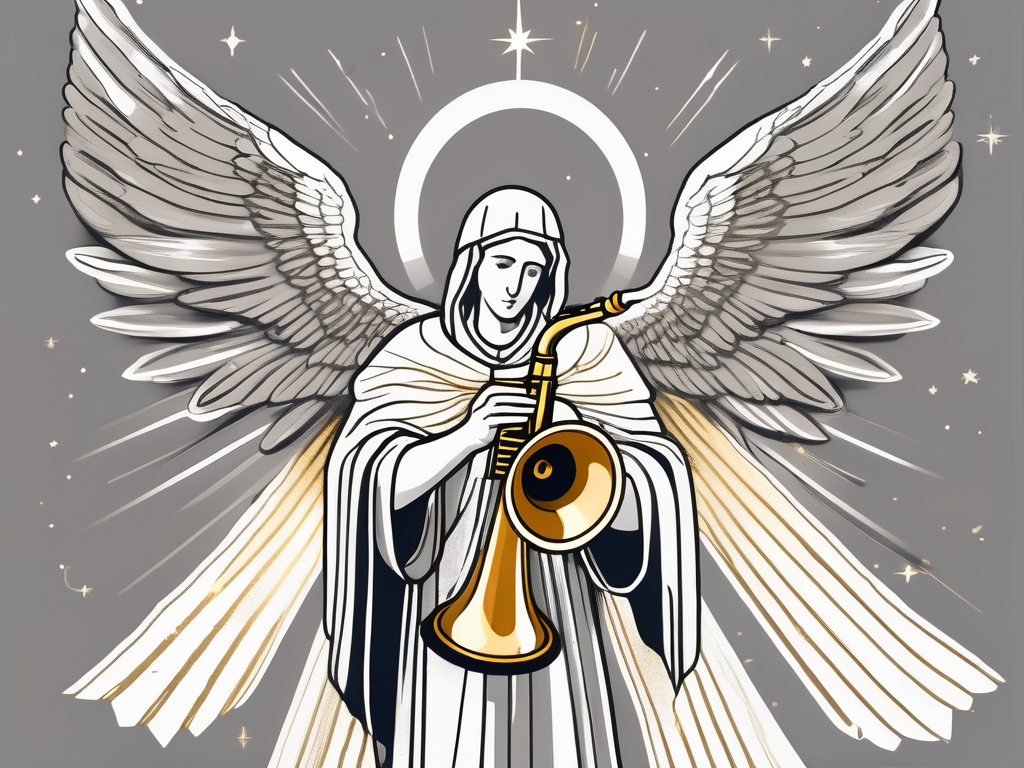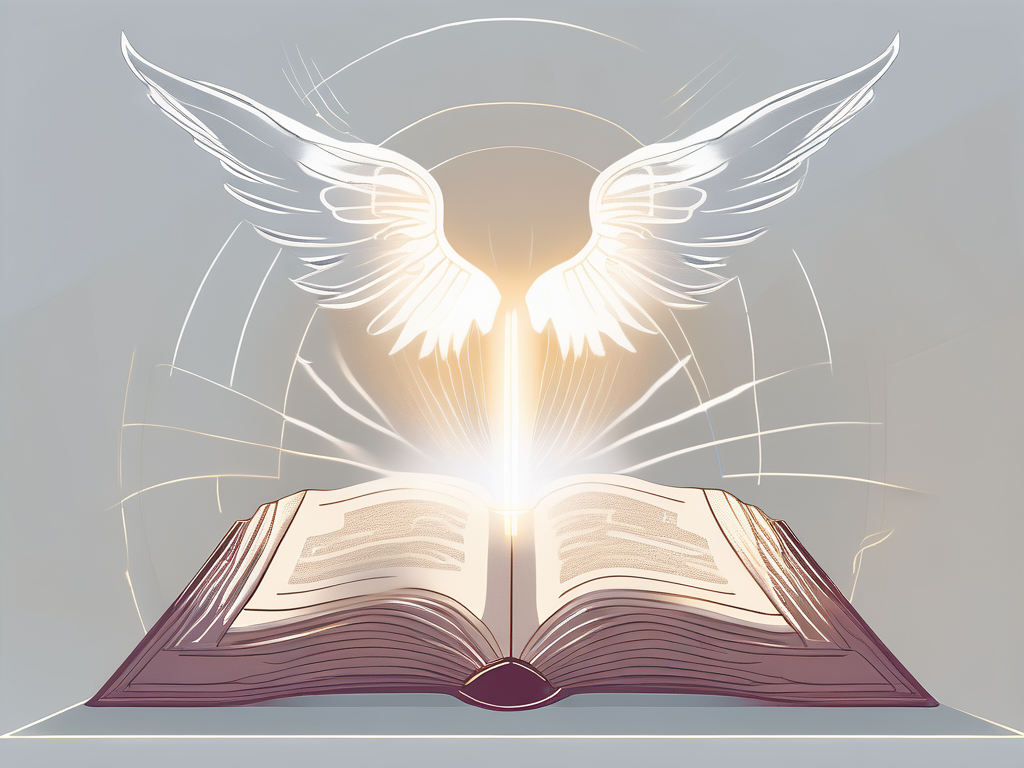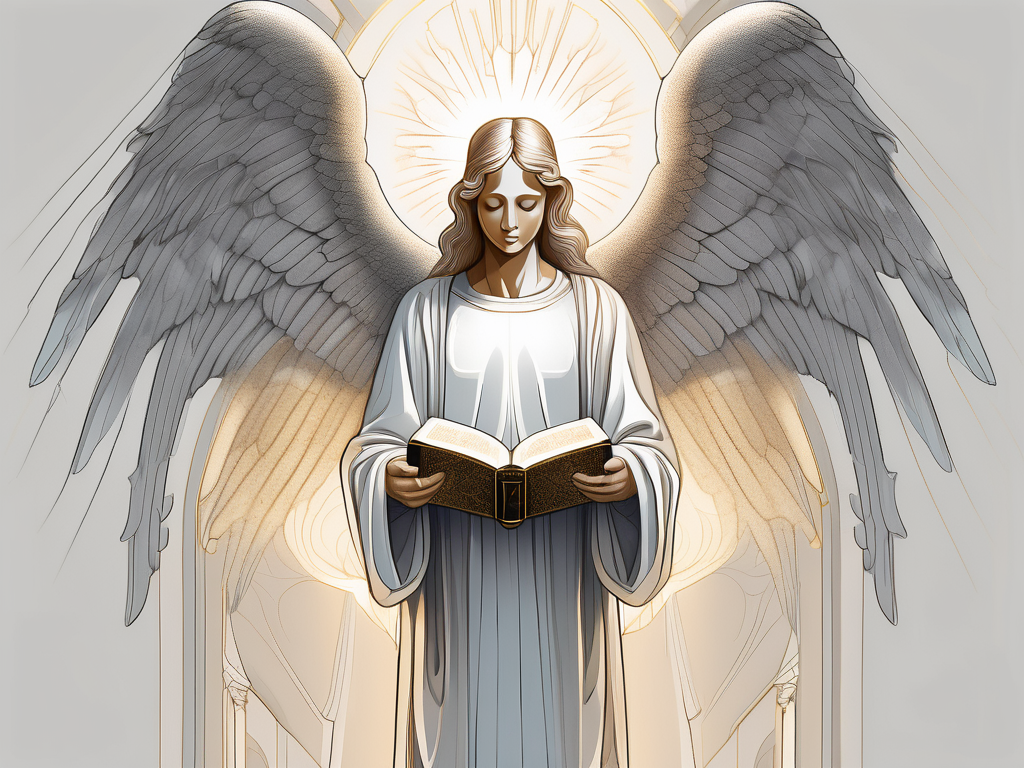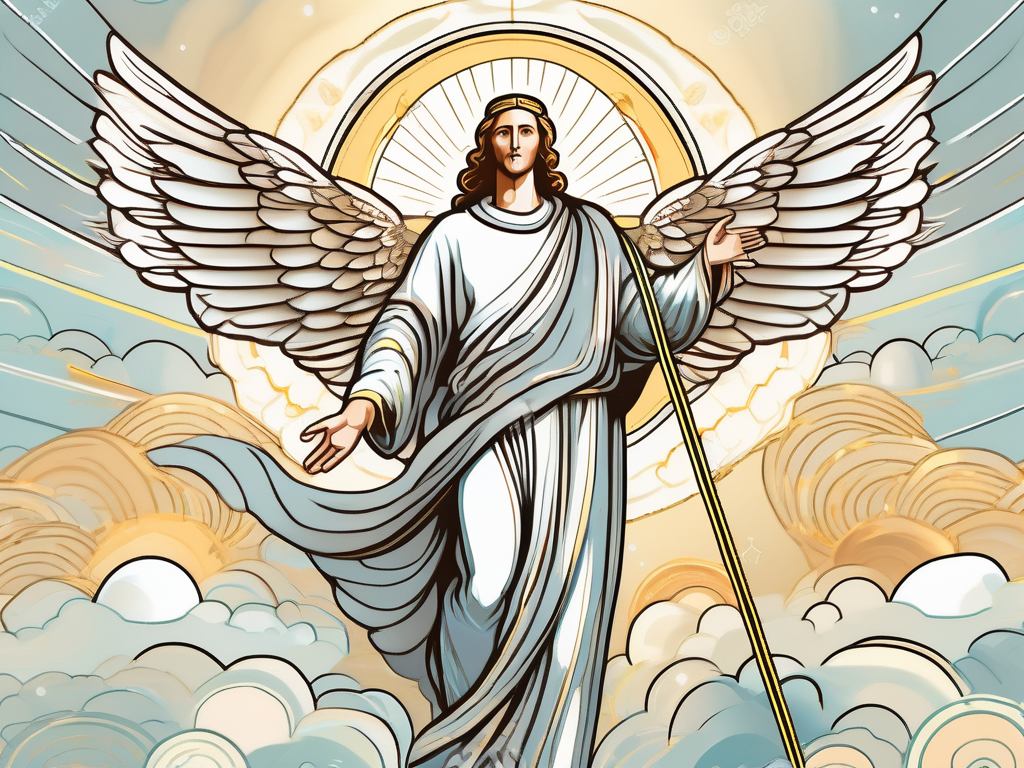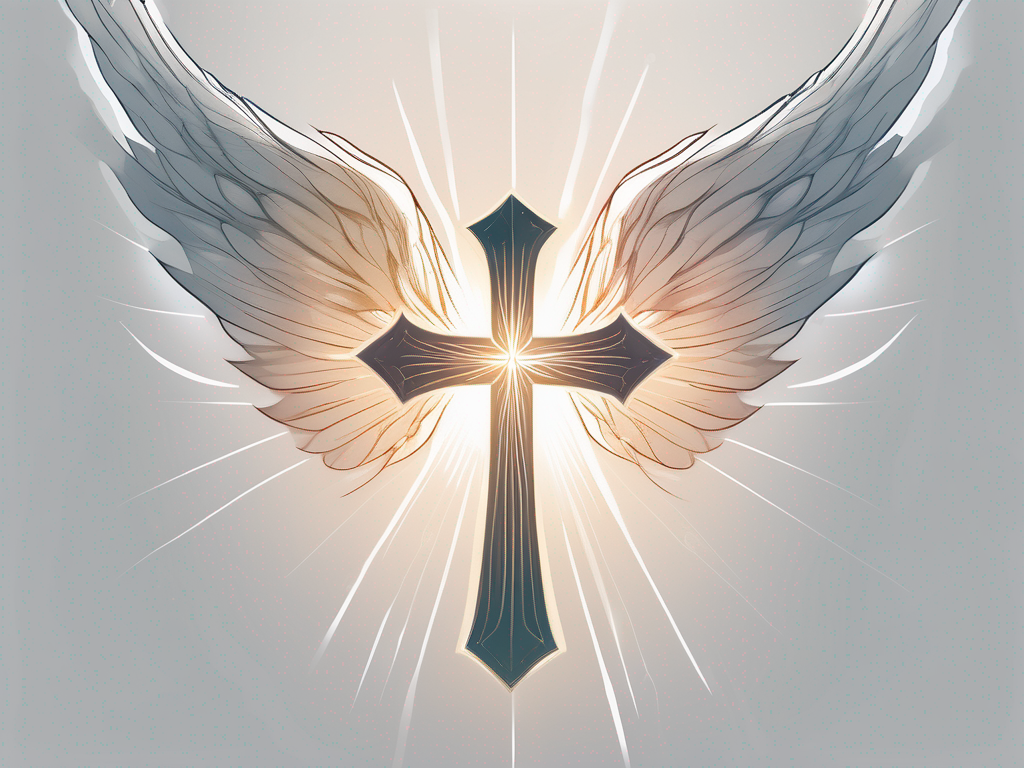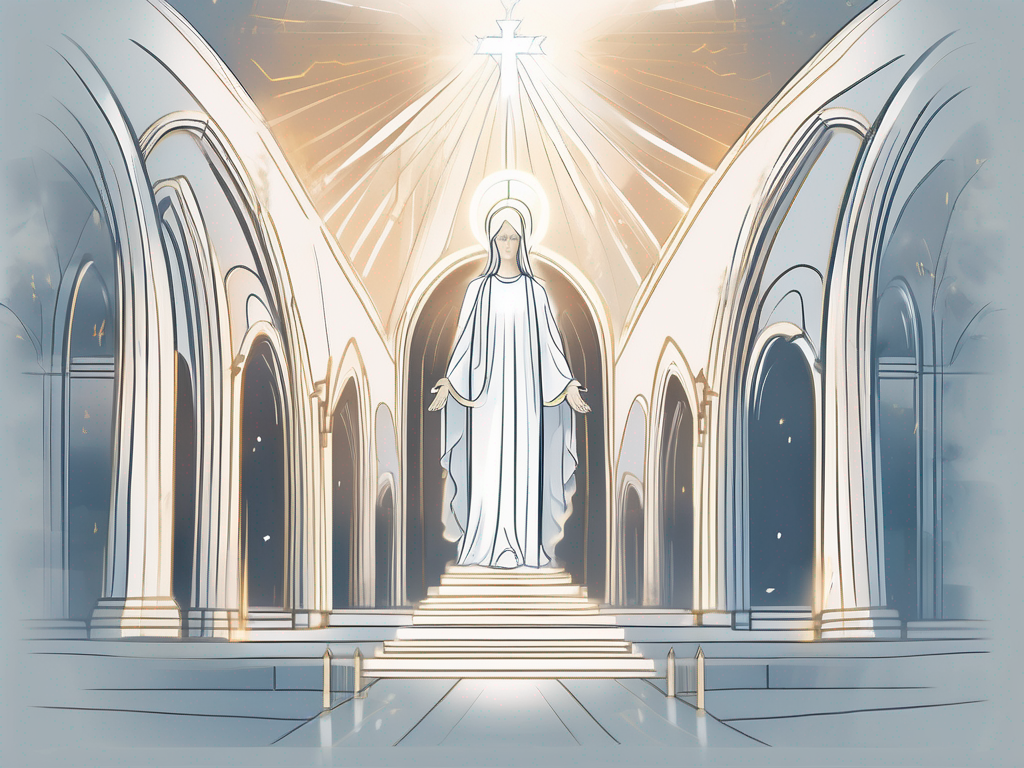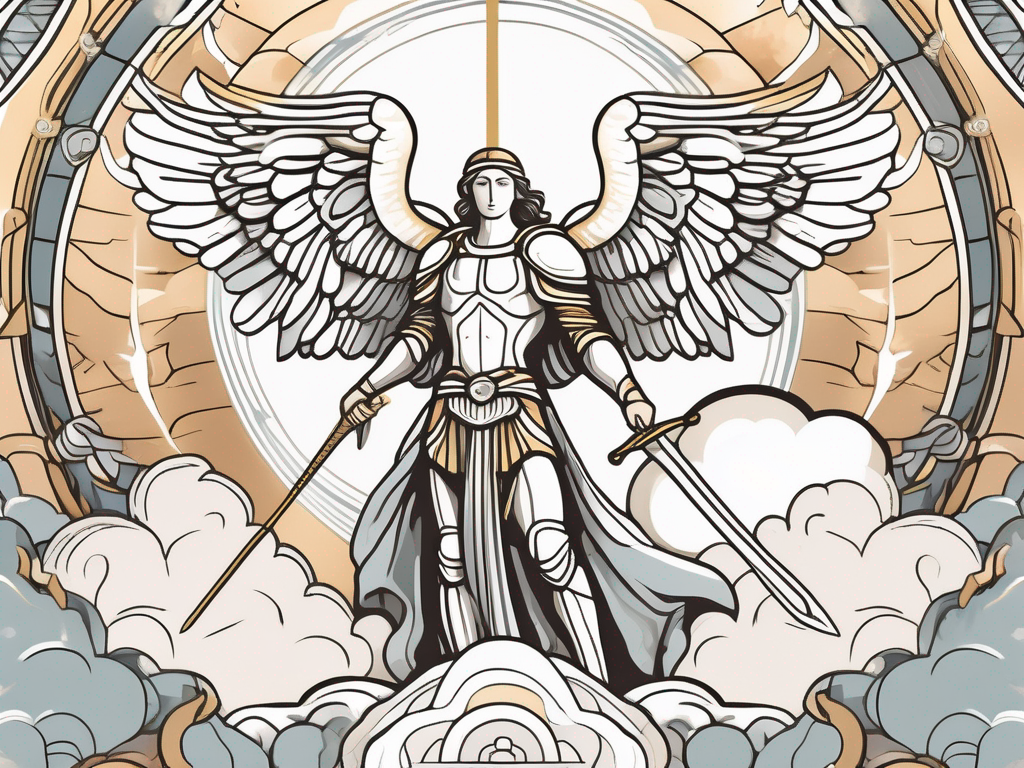Saint Gabriel the Archangel is a prominent figure in Christian theology and holds a key role as a divine messenger and protector. As an archangel, Gabriel belongs to the hierarchy of angels, which plays a vital part in understanding his significance within the Christian faith. Let us delve deeper into the life, symbolism, and influence of this celestial being.
Understanding the Role of Archangels in Christianity
In Christian belief, archangels are considered to be powerful heavenly beings who act as messengers between God and humanity. They are entrusted with delivering important messages, providing guidance, and protecting individuals in times of need. Alongside Saint Gabriel, other well-known archangels include Michael and Raphael.
Archangels have long been a subject of fascination and intrigue within Christian theology. Their existence is deeply rooted in the teachings of the Bible and has been a source of inspiration for countless believers throughout history. The role of archangels goes beyond being mere messengers; they are seen as celestial beings with immense power and authority, serving as a bridge between the divine and the human realm.
The Hierarchy of Angels: Where Does Gabriel Stand?
Within the hierarchy of angels, Gabriel holds a prominent position. Second only to Michael, Gabriel is often referred to as the “Prince of the Heavenly Armies.” This ranking reflects the significance of his role in delivering important messages from God to human beings throughout biblical history.
Gabriel’s name holds great meaning in itself. Derived from the Hebrew word “Gavri’el,” it translates to “God is my strength.” This name embodies the essence of Gabriel’s purpose – to bring strength, guidance, and divine messages to those in need. Gabriel’s appearances in the Bible, such as the Annunciation to the Virgin Mary, highlight the pivotal role he plays in shaping the course of human history.
The Significance of Archangels in Christian Theology
The existence of archangels is deeply rooted in Christian theology. Not only do they serve as messengers, but they also play a vital role as protectors. Archangels are believed to assist individuals in spiritual battles, offering comfort and guidance during challenging times.
Michael, often depicted as a warrior archangel, is known for his role in defending the faithful against evil forces. His name, which means “Who is like God,” reflects his unwavering loyalty and strength in the face of adversity. Raphael, on the other hand, is associated with healing and is often invoked for physical, emotional, and spiritual well-being.
Archangels serve as beacons of hope and sources of divine intervention. They are believed to intercede on behalf of humanity, offering protection, guidance, and solace. Their presence in Christian theology serves as a reminder of the ever-present love and care of God, who sends these celestial beings to watch over and assist His creation.
Throughout history, countless individuals have sought the intercession of archangels in times of distress, seeking their guidance and protection. The stories of miraculous interventions and divine messages attributed to these celestial beings continue to inspire and strengthen the faith of believers.
As we delve deeper into the role of archangels in Christianity, we begin to grasp the profound impact they have on the lives of believers. Their presence in the spiritual realm brings comfort, reassurance, and a sense of divine connection. Through their messages and guidance, archangels remind us of the eternal bond between heaven and earth, and the divine love that encompasses all.
The Biblical Accounts of Saint Gabriel
The Bible portrays Saint Gabriel’s involvement in various key moments in human history. His presence can be witnessed in both the Old and New Testaments, emphasizing his importance and divine purpose.
Gabriel in the Old Testament: Daniel’s Visions
One of the notable appearances of Saint Gabriel is recorded in the book of Daniel. Gabriel is sent by God to Daniel, interpreting his visions and providing the prophet with prophetic insight. This encounter highlights Gabriel’s role as an intermediary and divine messenger.
In the book of Daniel, we find that Gabriel’s visit to Daniel occurs during a time of great distress and uncertainty. Daniel, a faithful servant of God, had been praying fervently for understanding and guidance. It is in response to Daniel’s prayers that Gabriel is dispatched to bring him a message of hope and clarity.
As Gabriel appears before Daniel, the prophet is overwhelmed by the angel’s majestic presence. Gabriel’s countenance radiates with divine light, and his voice resonates with authority and compassion. He reassures Daniel that his prayers have been heard and that God has sent him to provide understanding and wisdom.
Throughout their interaction, Gabriel patiently explains the meaning behind Daniel’s visions, unveiling the divine plan that God has set in motion. His words bring comfort and reassurance to Daniel, reminding him of God’s faithfulness and sovereignty.
Gabriel’s role as an interpreter of visions and dreams is not limited to Daniel alone. Throughout the Old Testament, we see Gabriel appearing to other prophets, such as Zechariah and Ezekiel, to deliver messages from God and provide guidance in times of uncertainty.
Gabriel in the New Testament: Announcing the Birth of Jesus
Perhaps the most renowned biblical account of Saint Gabriel is his role in announcing the birth of Jesus to the Virgin Mary. In the Gospel of Luke, Gabriel appears to Mary, informing her that she will conceive a child through the Holy Spirit. This joyful proclamation solidifies Gabriel’s significance as a bearer of divine messages in Christianity.
The scene unfolds in a humble dwelling in Nazareth, where Mary, a young and devout woman, is visited by the angel Gabriel. Gabriel’s arrival is marked by a celestial radiance that fills the room, and Mary is both awestruck and filled with trepidation at the sight of the heavenly messenger.
With gentle words, Gabriel reassures Mary, saying, “Do not be afraid, Mary, for you have found favor with God. And behold, you will conceive in your womb and bear a son, and you shall call his name Jesus. He will be great and will be called the Son of the Most High.”
Mary, though initially perplexed by Gabriel’s announcement, humbly accepts her role in God’s divine plan. She responds with faith and obedience, saying, “Behold, I am the servant of the Lord; let it be to me according to your word.”
Through Gabriel’s visit, we witness the profound significance of Mary’s role in the salvation of humanity. Gabriel’s message not only reveals the miraculous nature of Jesus’ conception but also highlights Mary’s unwavering faith and willingness to surrender to God’s will.
As we reflect on the biblical accounts of Saint Gabriel, we are reminded of the angel’s pivotal role in delivering divine messages and guiding God’s chosen servants. Gabriel’s appearances throughout history serve as a testament to God’s active involvement in human affairs and His desire to communicate His love and purpose to His people.
The Symbolism of Saint Gabriel
Saint Gabriel’s symbolic representation holds great significance in Christian iconography and theological interpretations.
Gabriel as the Messenger of God
One of the primary symbols associated with Saint Gabriel is his role as God’s messenger. Gabriel’s appearance in biblical accounts serves as a reminder of the divine presence and communication with humanity. His name, which means “God is my strength,” reinforces this symbolism.
The Iconography of Saint Gabriel: Symbols and Their Meanings
In religious art, Saint Gabriel is often depicted with various symbolic elements. The most common symbols include a trumpet, representing the announcement of divine messages, and a lily, symbolizing purity and the Virgin Mary.
Saint Gabriel’s Feast Day and Celebrations
Saint Gabriel’s devoted followers celebrate his feast day with reverence and joy, honoring his divine role and influence within the Christian faith.
The Tradition of Saint Gabriel’s Day
The feast day of Saint Gabriel is traditionally celebrated on March 24th. This date holds great significance as it is commemorated as the day Gabriel delivered the joyful news of Jesus’ impending birth to Mary. It serves as a reminder of Gabriel’s pivotal role in the story of salvation.
How Saint Gabriel’s Feast Day is Celebrated Today
Devotees celebrate Saint Gabriel’s feast day through various religious and cultural customs. Special church services, processions, and prayers are organized to honor his divine intervention and protection, fostering a sense of unity among believers.
Saint Gabriel’s Influence in Art and Literature
Saint Gabriel’s inspirational presence extends beyond religious practices, making his mark in the realms of art and literature.
Depictions of Saint Gabriel in Religious Art
Throughout history, artists have captured the essence of Saint Gabriel’s divine nature through breathtaking paintings and sculptures. These artistic renditions serve as visual reminders of his essential role in delivering God’s messages to humanity.
References to Saint Gabriel in Literature and Poetry
Saint Gabriel’s prominence is not limited to visual art alone; he also appears in numerous literary works and poetry. His character often represents purity, holiness, and the significance of divine intervention in human lives.
In conclusion, Saint Gabriel the Archangel, as a divine messenger and protector, holds significant reverence in Christianity. From the hierarchy of angels to his biblical accounts and symbolic representation, Gabriel’s role is deeply intertwined with faith and spirituality. His feast day celebrations and artistic depictions further reinforce his profound influence within the Christian community. Through all these aspects, Saint Gabriel continues to inspire and guide believers, serving as a reminder of God’s presence in their lives.
